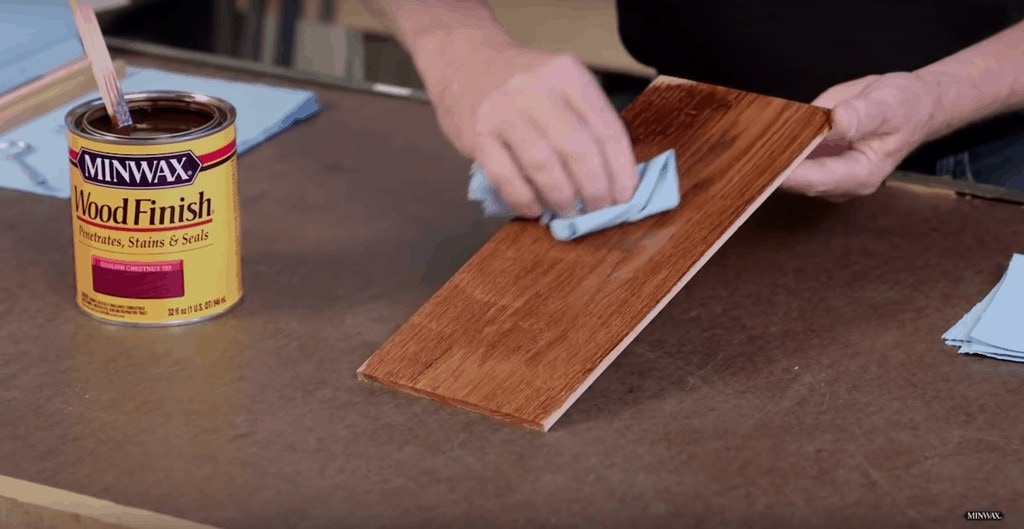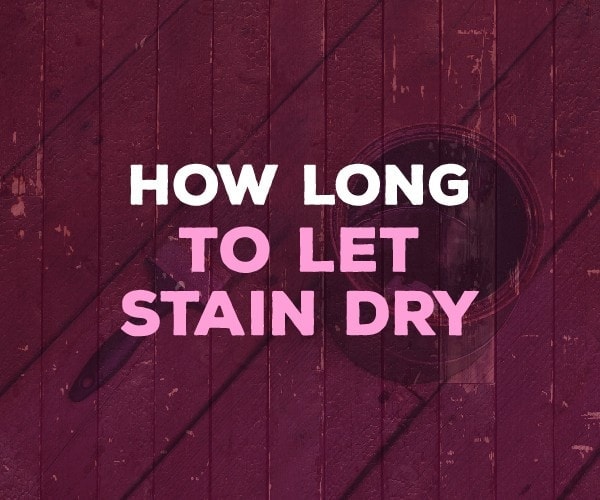
Table of contents
Are you wondering how long to let stain dry before polyurethane can be applied? It’s a question you’ll need to know the answer to because the quality of your finished project depends on it.
If you apply poly before the stain is adequately dry, you’re going to end up with stain mixing into your poly, poly that takes forever to dry, or worse. In some cases, applying poly over wet stain can reduce the bonding ability of the poly, which will end up ruining your finish over time.
So, how long to let stain dry before polyurethane can be applied? Read on, and we’ll give you all the info you need to know.
Best Practices
Whenever you’re dealing with any sort of finish, the best thing you can do for your project is to follow the directions that are printed on the label. Every finish and stain is different, and drying times can vary widely from brand to brand or product to product.
As a rule of thumb, you should wait 24-48 hours to allow the stain to fully dry before applying your polyurethane. If you’re extra cautious, you may even choose to wait 72 hours before applying your poly.
Keep in mind that beyond the baseline information the manufacturer provides on their label, drying times can still vary widely depending on the conditions you’re in. Below, we’ll cover some of the factors that can affect stain drying time.
Factors That Affect Drying Time
While the label on the stain will provide you with a good idea of how long you can expect stain to take to dry before you can apply polyurethane, there are several factors that are unique to the environment you’re staining in that will affect drying time.
Brand
The brand of stain your using is the most obvious factor that affects drying time. Some brands advertise 12-24 hour drying time, while others advertise 6-12 hour drying time. Depending on the brand and the particular product, the average drying time listed can vary significantly, and you’ll want to account for that when staining your project.
Temperature
The temperature of the room you’re working in has a profound effect on drying time. Most polyurethane can be applied from anywhere from 50-90 degrees. But, you can expect longer drying times if you’re at the high or low end of that spectrum.
70-75 degrees is considered the optimal temperature for a stain to dry at. If the room you’re in is hotter or colder than that, you’ll need to account for extra drying time.
Humidity
The act of a stain drying is caused by the moisture in the stain evaporating. As the moisture evaporates into the atmosphere, the stain begins to dry.
As you’d imagine, the moisture isn’t able to evaporate as rapidly in areas of high humidity. Extremely humid conditions may even double your overall drying time.
Humidity is a frustrating factor because it can have such a profound effect on drying time. If possible, try to stain in a lower humidity environment, or put the project off until you have a less humid day. Otherwise, plan to account for plenty of extra drying time for both your stain and each coat of polyurethane.
Not only does humidity affect drying time, but it can also cause a cloudy look in your poly topcoat. Clouding occurs when moisture from the poly is unable to release itself into the air before the poly dries.
Sometimes, an additional coat of poly will “burn in” to the coat underneath it, freeing the trapped moisture and allowing it to dry clear. Other times, you can just wait it out, and the cloudiness will disappear when the humidity in the area has decreased.
Circulation
The final factor to consider is the amount of circulation that’s in the room. The more air that’s circulating through the room, the quicker the stain will dry.
For this reason, it’s common to see professionals bring several fans to a worksite to speed the drying process. If you’re hoping to shave off some drying time without sacrificing the integrity of the stain or poly, adding some fans to the room can have a big impact.
Besides fans, open all of the windows in the room to increase air circulation further. Considering that open windows and fans can also help reduce and remove toxic fumes from your work environment, there’s no downside to making sure your workspace has plenty of circulation.
Final Word
If you’re wondering how long to let stain dry before polyurethane can be applied, you must be prepared for a multi-faceted answer. Since external factors like temperature, humidity, and air circulation have such a pronounced effect on drying time, it’s difficult to provide a simple answer to this question.
But, if you follow the directions on the stain and poly you’re working with, and account for the external factors we discussed when calculating your drying times, you should be well on your way to a perfect project. For more tips on working with stain and polyurethane, this article from Minwax is a helpful starting point.

